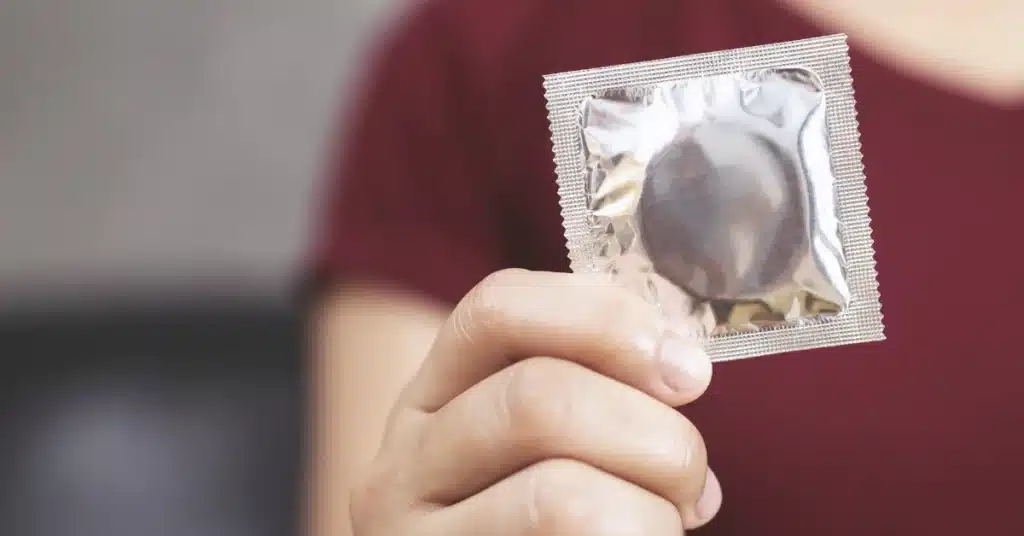Can You Get Pregnant From Pre-ejaculation?
The topic of pregnancy and its association with various forms of sexual encounters is one that has intrigued and sometimes alarmed individuals for generations.
Among the many questions surrounding this issue, one common query stands out: “Can you get pregnant from pre-ejaculation?”
The mere notion of the possibility often leads to a flurry of doubts and concerns, especially when considering contraceptive practices.
In this article, we’ll shed light on the nature of pre-cum and its potential in leading to pregnancy.
By understanding this, you can make informed choices and gain peace of mind when it comes to your reproductive health.
Pregnancy from pre-cum
During ovulation, if a person doesn’t use an effective contraceptive method, they are at a heightened risk of pregnancy.
In such cases, even pre-ejaculate fluid, commonly known as “pre-cum,” can contribute to the chance of conception.
This fluid, as mentioned, can sometimes contain sperm, and though the chance of pregnancy from pre-cum alone is generally lower than from actual ejaculation, it’s not impossible.
Here’s a breakdown of the main points about pre-cum:
Pre-cum can contain sperm

Preejaculate fluid serves primarily as a lubricant, but it can also contain sperm.
Even though the sperm concentration in the pre-cum is usually much lower than in ejaculation, it only takes one sperm to fertilize an egg.
Pre-cum is involuntary
The release of pre-ejaculate fluid isn’t something one can control.
It’s a natural physiological response that can occur before an actual ejaculation.
Studies show varying results
Different studies have shown varying percentages of men with sperm in their pre-cum.
One study indicated that Of the 27 participants, 41% had spermatozoa in their pre-ejaculatory samples, with 37% showing a significant proportion of motile sperm.
In another study from 2016, 16.7% of cases (7 out of 42) were detected with active sperms in pre-ejaculatory fluids.
Out of 42 volunteers, 41 (97.6%) had normal semen analyses, with one instance of low sperm count (oligospermia).
These results show that while not all men have sperm in their pre-cum, a significant number do.
Hence, the answer to the query whether can you get pregnant from pre-ejaculation still varies.
Likelihood of pregnancy from pre-cum
Here is an informative breakdown of the likelihood of pregnancy after exposure to pre-cum in different scenarios.
Some days before ovulation
The days leading up to ovulation are the most fertile.
There’s a higher likelihood of pregnancy if there’s exposure to pre-cum during this period.
While ovulating
Sperm has the potential to live in the female reproductive system for up to 5 days.
So, if pre-cumcontaining sperm enters the vagina at the beginning of ovulation, there’s a possibility of pregnancy.
During a period
The chances of getting pregnant are generally low during menstruation.
However, since sperm can live for several days and cycles can vary, pregnancy can still occur if there’s exposure to sperm, even in pre-cum.
With a condom

If relying solely on a male condom, there’s an 18% chance of pregnancy.
With a female condom, it’s 21%. If a condom is used after sexual contact has started, there’s still a risk of pre-cum.
With an IUD
Within the first year of insertion, the chance of pregnancy is less than 1%.
The longterm effectiveness varies depending on the type of IUD.
After a vasectomy
Right after the procedure, pregnancies can still occur.
It’s advised to continue using birth control until a sperm analysis confirms no sperm presence, typically within 16 weeks.
After giving birth
If exclusively breastfeeding for up to 6 months and no postpregnancy period has occurred, there’s a 2% chance of pregnancy.
Ovulation can occur before the first postpregnancy period, making it challenging to predict the risk during this time.
Conclusion
Pre-cum, or pre-ejaculate fluid, mainly acts as a lubricant during sexual activities but can occasionally contain sperm, making pregnancy a possibility.
The risk of conception from pre-cum varies with a woman’s menstrual cycle and contraceptive use, peaking during the fertile window and reducing during menstruation.
Contraceptive methods like condoms and IUDs can significantly reduce, but not eliminate, this risk.
Postchildbirth, especially during exclusive breastfeeding, the probability of pregnancy is altered, adding another layer of complexity to fertility management.
It’s essential to recognize that while pre-cum typically has fewer sperm than ejaculate, pregnancy can still occur.
Understanding and vigilance in contraceptive use remain critical.
Frequently Asked Questions
How much sperm is in the pre-cum?
pre-cum, or pre-ejaculate, generally does not contain sperm. However, sperm from a previous ejaculation can mix with pre-cum, introducing the possibility of pregnancy. It’s important to note that even small amounts of sperm can lead to conception.
Can you get pregnant without ejaculation?
Yes, pregnancy can still occur without an actual ejaculation. This is because pre-ejaculate, released before climax, might carry sperm. Therefore, even if a partner withdraws before ejaculating, there’s a risk of pregnancy due to the sperm in the pre-cum.
What is the limit of pre-cum?
During sexual arousal, males can produce up to 4 ml of pre-cum. This clear fluid acts primarily as a lubricant and may, in some instances, contain sperm if there is a recent ejaculation.
When is a woman most likely to conceive?
A woman’s highest likelihood of conception is during ovulation, which usually occurs 12 to 14 days before her next menstrual cycle begins. This time frame represents her most fertile window within the monthly cycle.
Can a guy release sperm without feeling it?
Yes, men can release a fluid known as pre-ejaculate or pre-cum without sensing it. This release is involuntary, happening during sexual arousal before the actual ejaculation, and can sometimes contain sperm, especially if there was a recent ejaculation.
WowRx uses only high-quality sources while writing our articles. Please read our content information policy to know more about how we keep our content reliable and trustworthy.






